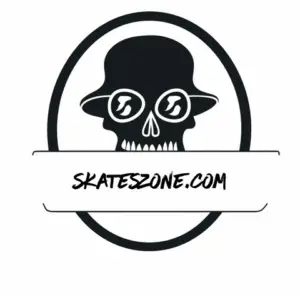Few things look more awkward on a skateboard than mismatched trucks and deck. Wide boards with skinny trucks, or vice versa, don’t just look wrong. They make the whole setup ride strangely. Knowing “what size trucks do i need” is simply a matter of taking a few measurements.
For the newest of riders, the trucks are the part of the board onto which the wheels and bearings mount. They are the suspension and steering component in one, and their dimensions have been perfected for generations now. The best skateboard trucks are quick-turning yet stable, but you shouldn’t just throw any trucks onto your deck. Read further to find out why.
Truck History
In 1973, Ronald Bennett created the first dedicated skateboard truck, and single handedly changed the sport forever. Tracker Trucks joined the fray soon after, beginning production of its first trucks in 1976. Ever since, various companies have come to dominate the product niche. In the 1980s, Gullwing had a turn at the fore, while Thunder and Venture rose to the top in the 1990s. Through it all, Independent has been a steady force in the industry.
One thing you will notice with all these companies is that their products look surprisingly similar. The reason may be that Bennett perfected the idea in the first place, or maybe some innovation awaits to revolutionize skateboarding yet again. The concept of matching trucks to board is not new, but it has come to mean something universal that it never meant in prior to this century.
Truck Parts
Trucks look much more complicated at first glance than they truly are. The baseplate is the flat aluminum part connects the truck to the deck. The aluminum part that connects to the baseplate is the hanger, and the axle is the steel rod that passes through the hanger. The bolt that holds it all together is called the kingpin, and the rubber grommets that provide cushioning when turning are called the bushings.
Truck Measurements
The only way to be sure a set of trucks will match a board is get a proper measurement. Understand that there are two ways to measure a board: with standard American units of inches or the metric units of millimeters. However, these two units are used independently for different parts of the trucks. If you are unfamiliar with the parts of the skateboard truck, this Video shows one being taken apart with descriptions.
The axles are measured in inches and the hangers are measured in millimeters. The amount of axle that sticks out of the hangar remains around 32mm to avoid excess axle sticking past the axle nuts and getting ground down. So, if you only have the hanger width, add 64 and convert to inches for the axle length.
Trucks are also divided into high and low profile varieties, based on how far the axle is from the deck. High profile trucks allow you to use slightly larger wheels, performing the same function as risers (which go under trucks to lift them). As this Video shows, the difference between profiles is slight.
One last difference between trucks that may affect some riders is the kingpin length. Some trucks have kingpins that are parallel to the hanger, while others are recessed. When we do grinds, kingpins that are parallel to the hanger will grind down a bit, but it isn’t noticeable. Vert and transition skaters seem more perturbed by this, and usually prefer recessed kingpins, but some street skaters do as well. Kingpin length is a matter of personal preference.
Board Measurements
Skateboard sizes are given in two measurements, and always (in America) in inches: length and width. Street skateboard widths typically range from 7.5 inches to 9 inches, though some outliers are a little larger or smaller. The average skateboard you will see on the street these days will probably be about 8.25 inches, but this average measurement changes over time. In the 1990s and 2000s, the most common width was around 7.5 to 7.75. The trend has been toward bigger boards, but that can quickly change. No size is correct. Ride what you like.
Putting Them Together
While there is no correct size of skateboard, there is a correct size of truck for a skateboard. Simply, the axle width should be within about ¼ inch of the width of the board either way. So, trucks with 8-inch axles will work for boards between 7.75 and 8.25 inches. If someone with an 8.25-inch board gets trucks smaller than 8 inches, they run the risk of tipping when they turn. The board will also feel as strange when turning as it would with axles that are too wide.
Getting wider trucks may allow you to lock into grinds easier, but if the axles stick out too far from the side of the board they will get messed up. Also, the turning radius of the setup will feel off. It will not be wrong, it will just feel noticeably strange. If you want wider trucks, put them on a matching wider board. That way, everything will feel spot-on correct.
Conclusion
The relationship between truck width and board width only truly gets confusing when comparing a board width in inches to a truck width in millimeters. Once we know the axle width, we can simply get the two numbers to match as closely as possible. Again, don’t spend a minute worrying about which width is correct. The question of what size skateboard wheels would also count on this. The one that suits your eye and your style is the right one. Keep on riding what you love.
Related Post: Best Skateboard Trucks
Other riders out there are probably struggling right now with this same problem. So, why not share this article so they can get to the bottom of the issue. And if you feel there is magic ratio that works better than matching the widths, please share your feelings in the comments sections.
